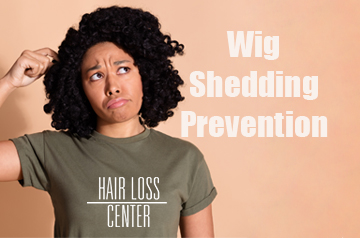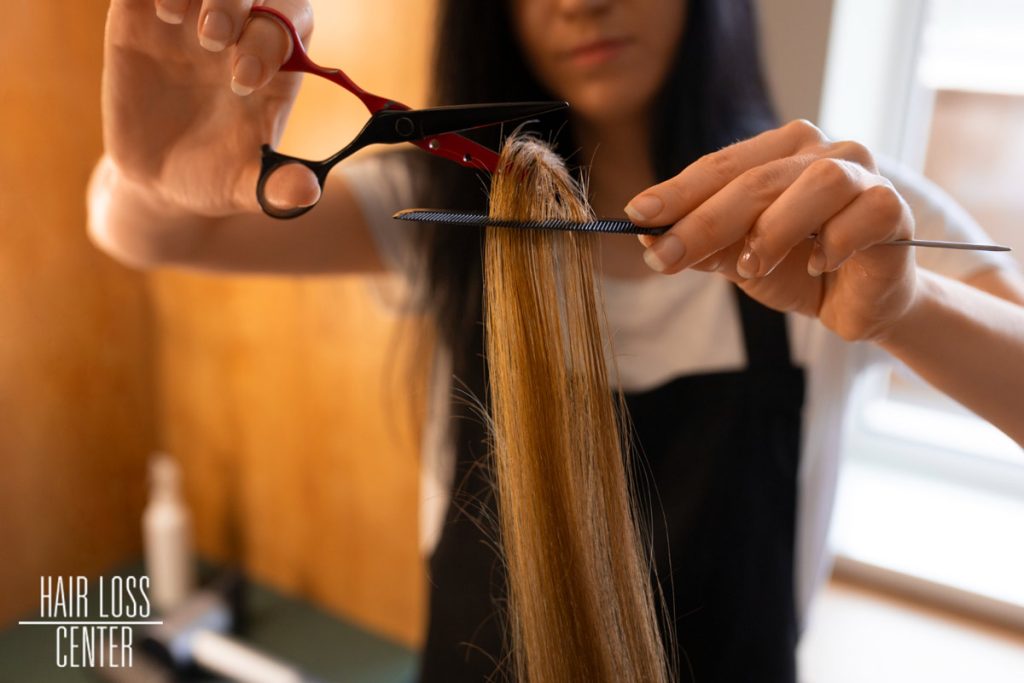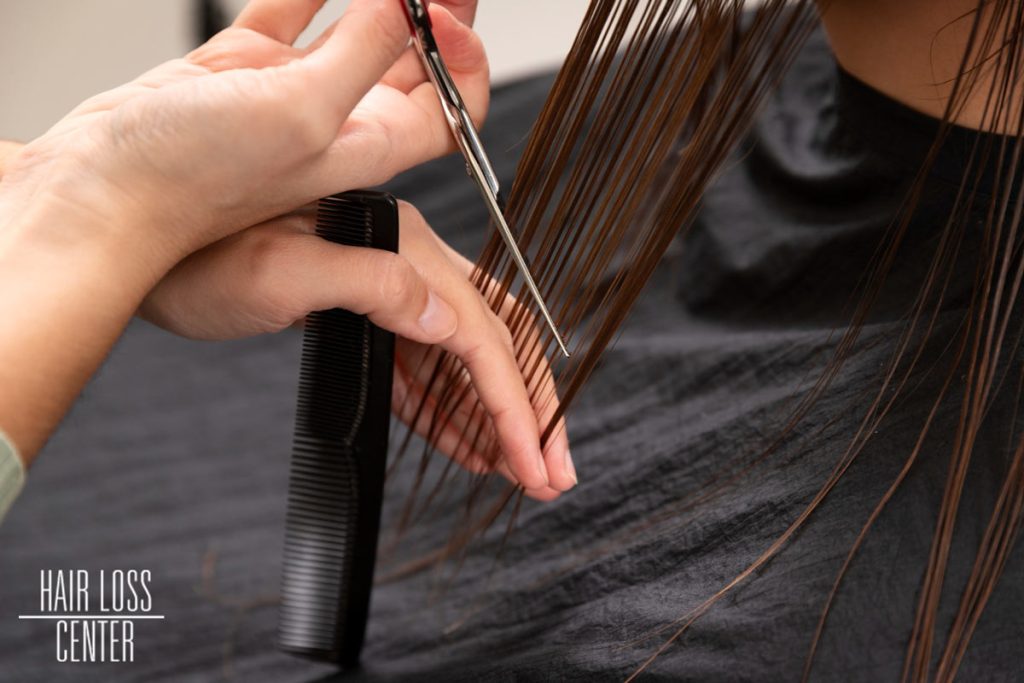

Why Is My Wig Shedding? Wig Hair Shedding Prevention Tips and Solutions
If you’re new to wearing wigs, you might ask ‘What?? Wig hair shedding??’. Well, unfortunately, that’s true. Wigs can lose hair as well. So, if you’re enjoying a wig, you should also learn about wig shedding prevention to extend the lifespan of your wig and maintain its natural-looking appearance and beauty.
So, this article is for all of you wig-wearers! You’re going to learn about wig hair shedding causes, prevention tips, and even some solutions. Let’s start!
Did you know high-quality human hair wigs shed less than any other wigs? Let’s get you a custom European hair wig that lasts a long time.
Call to get a quote.
Wig Hair Shedding Causes
When you purchase a wig, whether it’s for medical reasons or just fashion, you should learn how to take care of it because wigs are generally delicate products whose lifespan and good looks depend very much on how you maintain them.
Wig shedding is one of those disasters that makes your wig look untidy, thin, unrealistic, and soon useless. So, learning what causes wig hair shedding and how to prevent it is essential.
Below, we’ll go over different causes of wig shedding hair and you’d better read them before you even buy a wig.
The Type of Wig You Have Matters
Wigs come in various types based on their cap construction (like lace front, full lace, etc.), hair type (synthetic, human hair, Remy, etc.), hairstyle, and some other factors. Each one of these types has its own advantages and disadvantages but when it comes to wig shedding, there are a few considerations to keep in mind.
– High-Quality Wigs Tend to Shed Less
Wigs with poor quality are more budget-friendly, like synthetic wigs or low-quality human hair wigs. However, their lifespan is short, and one of their main problems is hair shedding.
Also, in low-quality human hair wigs, such as non-Remy hair wigs, wig shedding is common. In these wigs, the cuticles are in different directions causing a lot of tangling. Every time you’re detangling a wig, it’ll lose some of its strands and make the knots come loose. So, high-quality human hair wigs seem like a long-term investment.
What’s more, if the wig doesn’t fit you well and/or it’s difficult to secure properly, you’re in for a lot of wig hair shedding. This happens because the constant slipping, shifting, stretching, etc., tear out the strands from the base. So, ordering a custom wig or customizing the wig after purchasing are the best ways to ensure a proper wig size.
In addition, some wigs have gone through too much chemical processing to achieve their texture or color. This means that the hair strands are already weak and may shed more easily.
Besides the quality of the fibers, the construction of the cap matters too. For example, while lace front wigs are usually more natural-looking than other constructions, they’re very delicate and are prone to shedding, especially along the perimeter. So, if a natural look is important to you, you should handle your lace front wig with more care.
Finally, wigs that are more realistic and come with better quality are usually hand-tied. They’re knotted with more care and secured one by one meticulously. So, the ties are less likely to come loose, especially double-knotted wigs, compared to machine-made wigs. However, hand-tied wigs are generally more delicate and if you don’t maintain them properly, they can damage and start shedding.
Improper Maintenance and Storage

Whether you want to style, wash, or store the wig, proper wig care is key. As mentioned above, wigs, particularly more natural-looking ones, are very fragile and delicate. So, the following mistakes in their maintenance lead to excessive wig hair shedding.
- Brushing or combing roughly,
- Using the wrong type of comb or brush for your wig,
- Detangling improperly (if your wig is tangled, start from the ends and work your way up little by little.),
- Excessive heat styling, restyling, coloring, and pulling the hair tightly,
- Washing too frequently and under poor-quality water (Read more about the effects of water quality on natural hair and wigs.),
- Using the wrong type of products (only use wig-friendly hair products for washing and styling.),
- Improper storage that leads to matting and tangling,
- Storing in a place with direct sunlight or too much humidity and heat,
- And not packing the wig carefully when traveling (read our guide on traveling with wigs.).
Always follow the instructions from the wig manufacturer or a wig expert to make sure you’re doing everything right. A good wig care plan means you can enjoy your beautiful wig for longer. Also, you can read our guide on styling, washing, and storing a wig here for more tips.
Environmental Factors
Of course, the more you wear a wig, the faster it’ll wear out. So, daily wear and tear is unavoidable but can be reduced significantly if you take care of your wig appropriately.
One thing that most wig wearers are unaware of is the effects of environmental factors on a wig’s appearance and durability.
Prolonged exposure to sunlight, for example, weakens the fibers and increases wig shedding over time. Also, wearing wigs in windy weather without protecting them with a hat or a scarf can cause tangles. And, heat and humidity cause the fibers to become dry and frizzy, which eventually lead to more wig shedding.
Read this article about wig care tips in fall and winter to learn more about protecting your wig from different elements.
Your Scalp Conditions
Last but not least is how your scalp conditions can cause wig shedding. Like natural hair, when the scalp under the wig isn’t healthy, the wig hair fibers will be affected as well. (Learn more about healthy scalp and scalp car habits here.)
For example, if the scalp is too oily, this oil is transferred to the wig and may loosen the knots. Also, it makes you wash the wig more frequently because the hair becomes greasy and dirty more often. And, as mentioned above, frequent wig washing will lead to wig hair shedding.
The best solution for this is wearing a wig cap under the wig. However, if the cap doesn’t fit well, there will be a lot of tension and friction, which is another cause of shedding.
Overall, choosing a quality wig that fits you well and taking good care of it can reduce wig hair shedding significantly. To make it easier for you, we have put together a few effective wig-shedding prevention tips.
Tips to Prevent Wig Hair Shedding
Let’s summarize what we’ve discussed until now in the tips below.
- Never pull or tug the hair when putting on or taking off the wig.
- Try to minimize friction and tension by wearing the right wig size and using a good method to secure it properly.
- Only use a wig brush or a wide-tooth comb. Start brushing from the ends and little by little work your way up to prevent pulling on the fibers.
- Avoid excessive use of heat-styling tools, like curling irons and blow dryers.
- Always use mild wig-specific hair products for washing, conditioning, and styling.
- Avoid overwashing and use filtered water if you’re in a hard water area.
- Use cold or lukewarm water and avoid rubbing and wringing the hair.
- Follow the instructions carefully when washing, drying, and styling the wig.
- Let your wig air dry on a wig stand.
- Always store your wig on a wig stand away from direct sunlight, heat, and humidity.
- If your wig is hand-tied, regularly check for loose hair and re-knot them if possible (see the section below to learn more.).
- Using hair dyes, bleaching, perms, and any other chemical treatments damages the strands and increases wig shedding. So, they’re not recommended.
- Take good care of your own hair and scalp under the wig and keep them clean.
- Use a suitable wig cap.
- Before purchasing a wig, consult with an expert and do some research to make the best decision.
Do you need help to choose the right wig? Schedule a free consultation session at Newport Hair Loss Centers in Los Angeles, Orange, and San Diego.
Call now!
Wig Shedding Repair; Can I Repair My Wig at Home?

If your wig has lost a lot of hair, it’s better to ask a professional wig maker to re-knot the hair or replace the lace. But it’s better to purchase a new one if you’ve been using the wig for a long time.
However, people who frequently wear hand-tied wigs should learn how to re-knot the strands. So, when you’re checking the wig and find a few loose strands, you can immediately re-knot them to avoid wig shedding.
To re-knot them, you need a ventilating needle (also called a wig-making needle). Make sure the wig is secured on its stand. Then, insert the hair strand through the eye of the needle and pull the strand through the wig lace. Use a looping technique to knot the hair.
If you don’t know how to use a ventilating needle, watch a video on YouTube.
Aside from re-knotting, you can also use a suitable knot sealer spray to secure the knots and avoid wig hair shedding.
For those who use wefted wigs and the wefts have come loose, you can simply use a needle and matching thread to sew them back into the wig cap. But if there has been a lot of wig hair loss, you need to ask a professional to add new wefts.
Plus, there are some wig repair kits in the market that can be useful to repair hand-tied and wefted wigs. Some of these kits even include patches to adhere to thinning areas to add hair. They usually come with instructions, but the result may not be as natural-looking as your wig once looked.
So, to some extent, you can repair your wig that’s going through hair loss at home. However, you need to be patient and careful because delicate wig materials can be damaged quickly.
FAQs About Minimizing Wig Hair Loss
Here are a few of your most common questions.
Do Synthetic Wigs Shed More Than Human Hair Wigs?
Yes. Synthetic wigs, especially low-quality ones, tend to shed more than high-quality human hair wigs, which are more durable.
Is Wig Shedding Normal?
Yes. Like your natural hair, wig hair loss is also normal. However, you’ll grow new hair but your wig doesn’t! So, excessive wig hair shedding shows that either the quality of the wig isn’t good or there’s something wrong with the way you handle your wig.
What Type of Brush or Comb Should I Use on My Wig?
A wig brush or a wide-tooth comb.
How Often Should I Wash My Wig to Avoid Wig Hair Shedding?
There’s no specific answer to this question. Typically, every 7 to 14 times you wear the wig can be enough. However, it depends on a few factors. For example, if you use hair styling products and there’s product buildup on the fibers, you’ll need to wash the wig more frequently, which can increase shedding.
Buy Non-Shedding Human Hair Wigs in Southern California
We discussed different causes and prevention tips to help you stop your wig from shedding more hair. But if you haven’t purchased a wig, it’s time to consider your preferences and consult with an experienced wig expert to choose the right wig for yourself.
At Newport Hair Loss Centers, we offer real hair wigs with the highest quality that are made from the finest natural hair, European hair. They’re durable and shed and tangle much less than other wigs.
Plus, you can have a 30-minute free consultation session with our experts at our centers in Orange County (949-322-9555), San Diego (949-640-4247), and Los Angeles (310-991-0087). Call to schedule an appointment.
LA OFFICE
Beverly Hills
8383 Wilshire Blvd, First Floor
Los Angeles, CA 90211
ORANGE COUNTY OFFICE
NEWPORT BEACH
240 Newport Center Drive, Suite 111
Newport Beach, CA 92660
SAN DIEGO OFFICE
LA JOLLA
4660 La Jolla Village Dr. Suite100
San Diego, CA 92122
NEWPORT HAIR LOSS CENTER
Newport Hair Loss Center gives hair loss sufferers a way to restore their appearance and boost their confidence, whether they are suffering from trichotillomania, alopecia, or are currently going through chemotherapy.
Site Map

